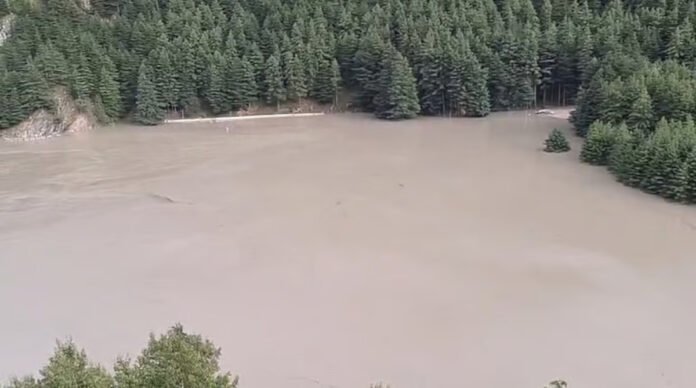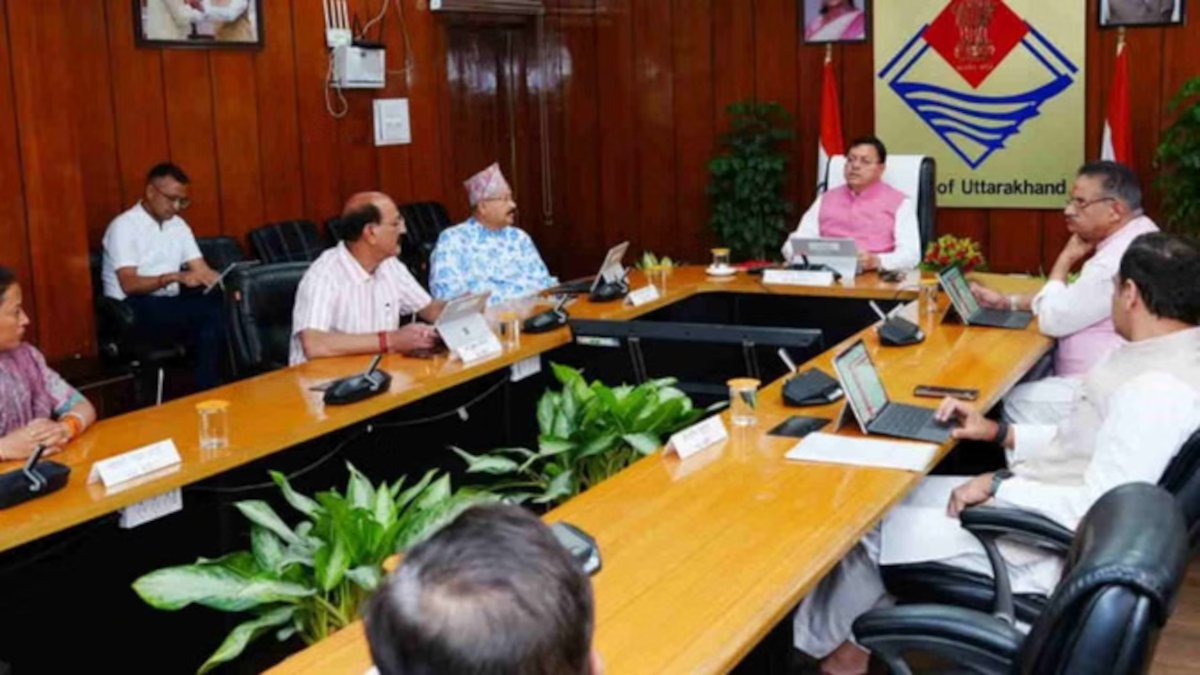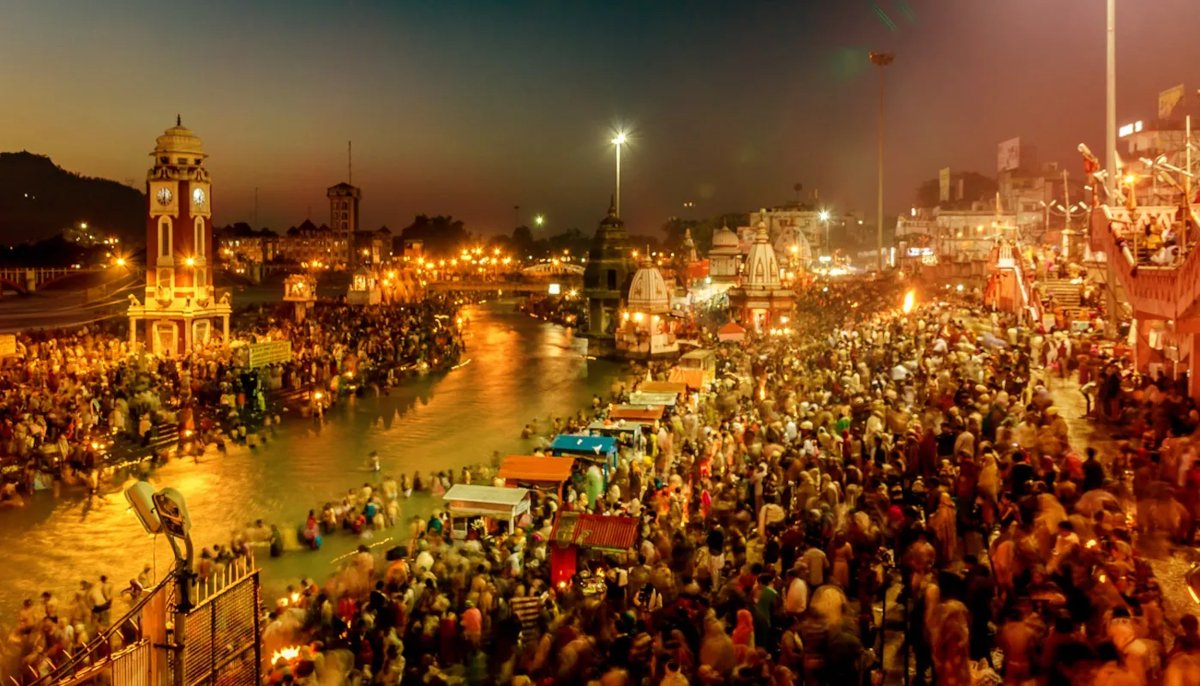The volatile monsoon season in Uttarakhand has once again demonstrated its unpredictable power, leading to a significant natural damming of the Yamuna River near Syana Chatti in the Uttarkashi district. A massive landslide, triggered by heavy rainfall on August 21st (Thursday), caused a large volume of debris and mud to cascade into the river from a tributary known as Kupada Khad (or Garh gaad), creating a sizable artificial lake. This event has led to the inundation of surrounding areas and raised serious concerns about potential flash floods in the downstream settlements.
The blockage, which occurred upstream of the National Highway (NH) bridge, has submerged approximately 30 buildings, including a guest house operated by Garhwal Mandal Vikas Nigam Ltd. (GMVNL), a local police post, an inter-college, and several hotels. The submergence of the NH bridge has effectively cut off Syana Chatti and other upstream communities from the district headquarters, severely impacting connectivity and hampering rescue and relief operations.
Local police and the State Disaster Response Force (SDRF) acted swiftly, evacuating around 300 people from the affected low-lying areas to safety. An alert has been issued for communities further downstream, including Ojhari Pujargon, Paligaad, Kuthnor, and Kharadi, warning them of the potential for a catastrophic breach. The District Administration is actively monitoring the situation, with a team from the National Disaster Response Force (NDRF) also arriving on site with specialised equipment. However, high water levels and ongoing debris slides from the Kupada gaad have so far prevented any attempt to artificially breach the lake.
The situation is particularly precarious due to the potential for a sudden release of the accumulated water, which could result in a massive flash flood. Officials are also concerned about the potential damage to the 8 MW Gangani hydro power project located downstream. This is not the first time this particular area has experienced such an event, as residents had previously petitioned the Chief Minister for the removal of debris from the stream after a similar, though less severe, incident. This underscores the region’s inherent geological vulnerability to landslides and river blockages during the monsoon.
With continuous rainfall expected as per the India Meteorological Department’s forecast for the coming days, the danger remains high. The forecast for August 23rd (Saturday) indicates heavy to very heavy rain is likely in isolated places in Uttarkashi, Dehradun, Tehri, Bageshwar, and Pithoragarh districts, which could exacerbate the situation. The continuous monitoring and readiness of the disaster response teams are paramount in preventing a larger tragedy.
The local administration is working to establish alternative access routes and ensure the affected population has access to essential supplies. The public has been advised to avoid the area and follow the instructions of emergency services. This incident serves as a stark reminder of the challenges posed by extreme weather events in the Himalayan region and highlights the need for a comprehensive long-term strategy for disaster preparedness and infrastructure resilience.



























